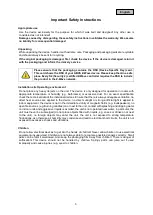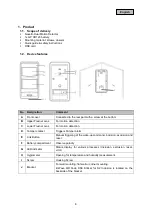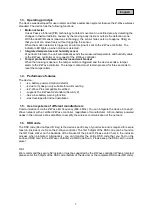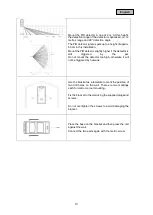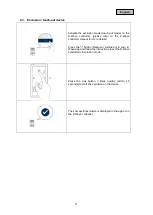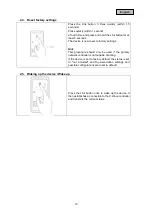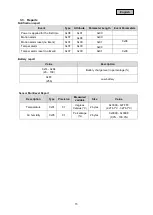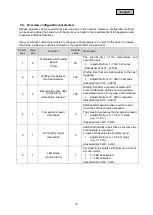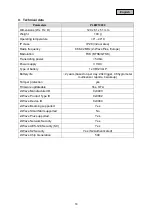
9
English
2.2. Planning, mounting and installation
The device uses low-power radio signals to communicate with the Z-Wave controller. To achieve the
best results, please note the following:
Please do not attach directly to metal planes or metal constructions, as this may limit the range.
The device has a radio range of up to 40 m.
The battery life of the device is reduced if the wireless connection to the Z-Wave controller is not
direct but via a repeater.
Test mode
Press the tamper switch 3 times in 1.5 seconds to activate the test mode. The test mode switches off
automatically after 10 minutes.
In test mode
the preset waiting time is ignored and several movement messages are also sent one after the
other without a reset.
Every 5 seconds a check is made to see if there is any movement. Accordingly, the LED lights
up when motion is present and a motion message is sent. If there is no movement, the reset
message is sent.
Use the test mode to select the optimal installation location.
Select installation location
The detector is only suitable for indoor installation.
When selecting a position for the detector, the following points should be observed:
Do not install the detector opposite a window or where it is exposed to direct sunlight. PIR
detectors are not suitable for use in conservatories due to the high temperature fluctuations.
Do not install the detector where it is exposed to fans or air conditioners.
Do not install the detector near a heat source (e.g. fire, radiator, boiler, etc.).
Do not mount the detector in a position where it is subject to excessive vibration.
Mounting instructions:
The detector is designed for mounting on a flat wall or
in a corner.
If possible, mount the detector in the corner of the
room so that the path of a person passes through the
detection zone. PIR detectors respond more
effectively to movement through the detection zone
than to movement towards the sensor.
Sensitive
Insensitive



